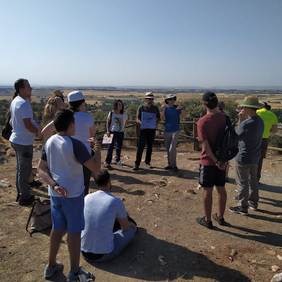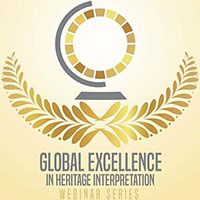Worldwide quality standards in sustainable tourism means a management toolkit for all tourism related stakeholders. Heritage interpretation is rarely used as a key to create new indicators that connect sustainable development and conservation. However, sustainable tourism and heritage interpretation share the same perspective on social and environmental pillars. Sustainable tourism management plans both at destination and product level may have to rethink the way heritage interpretation is linked with the promotion of destinations.
Having a sustainable tourism label has become a hot topic in recent years for policy making, education, businesses and government agencies. Those certifications represent a management toolkit towards sustainable development and a worldwide effort to develop a common language about sustainability in tourism. Nevertheless, heritage interpretation is rarely a source from which a range of indicators emerge in order to measure, evaluate and establish best practices in sustainable tourism. Are we able to escape from just a bunch of volumetric indicators in tourism?
In the search for customer satisfaction, the newest tourism certification programmes, also known as ‘green certification’, have begun to take into account the three pillars of sustainable tourism: environment, society and economy. Above all, sustainable tourism is aimed at reducing the negative impacts of tourism, seeking always to extend positive impacts with a special focus on conservation, the host population and education for visitors. Additionally, heritage interpretation emerged linked to the management and planning of natural protected areas as a tool for conservation whereas it is now a way of enhancing a destination’s assets in terms of tourism.
The complex tourism system has the capacity to convert natural and cultural heritage into a tourism product. In some cases, such as ‘experiential tourism’, the service given to a specific traveller is aimed at adding value to a specific asset. As well as fostering a more rigourous approach to society and local culture. Moreover, heritage interpretation is often used as a tool to ‘promote’. There are very few examples of heritage interpretation as a tool for management in tourism destinations.
Sustainable tourim has the same basic standards as heritage interpretation in theory. Both are aimed at connecting living spaces with both locals and visitors. The use of heritage interpretation also ensures greater involvement of the local population in tourism products, if done in a participatory and responsible manner. This means the local population may have an important role in the search for meanings and the facilitation of heritage interpretation services. Participation of locals offers a greater knowledge of intangible heritage, such as oral traditions. Achieving greater sustainability of the the tourism activity from the social point of view, means involving the community in a direct way.
On the other hand, both terms – heritage interpretation and sustainable tourism – involve the creation of inclusive businesses with top quality services. Sustainability planning implies thus, creating the conditions for it when planning the responsible development of a tourist destination. Heritage interpretation techniques help to involve the local population from the first steps of planning, helping them to identify, recover and value their heritage. From the environmental point of view, sustainable tourism destinations, far from being sustainable at all, tend to focus on simply reducing negative impacts. Whereas heritage interpretation is understood as a tool for engaging and educating people. Again, we find the connection of both concepts in terms of sustainable tourism planning.
Is this happening because we do not include proper indicators that help tourism stakeholders to connect heritage interpretation within their tourism marketing plans? That could be one of the reasons why we may insist on including it in any process that implies value enhacement or any other form of sustainable tourism.
When facing the challenges of creating worldwide tourism quality standards, there is a need to have a transversal, dynamic and inclusive vision that takes into account social, cultural, economic and environmental dimensions that both sustaianble tourism and heritage interpretation implies. Overcoming the lack of heritage interpretation prominence means to include active protection of heritage while following high quality criteria for the creation and promotion of a destination or service. Only in this way will it be possible to move towards tourism understood as an enriching and sustainable social practice.
Nuria Mohedano is IE’s Tourism Coordinator. She is based in Puertolllano, Castilla-La Mancha, Spain and specialises in Sustainble Tourism Management at Syddansk University in Denmark. She currently combines teaching in non-formal education tourism related courses and freelance work as sustainable tourism marketing consultant. She can be contacted at: nuria.mohedano@interpret-europe.net.




